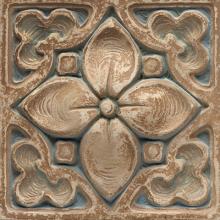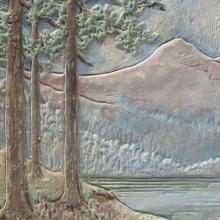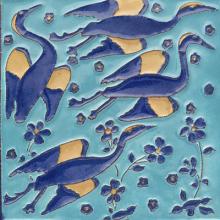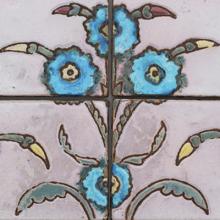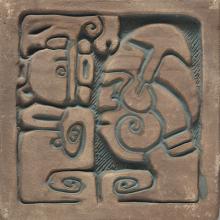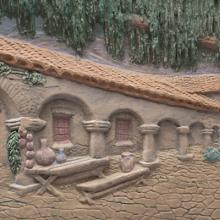International Terminal
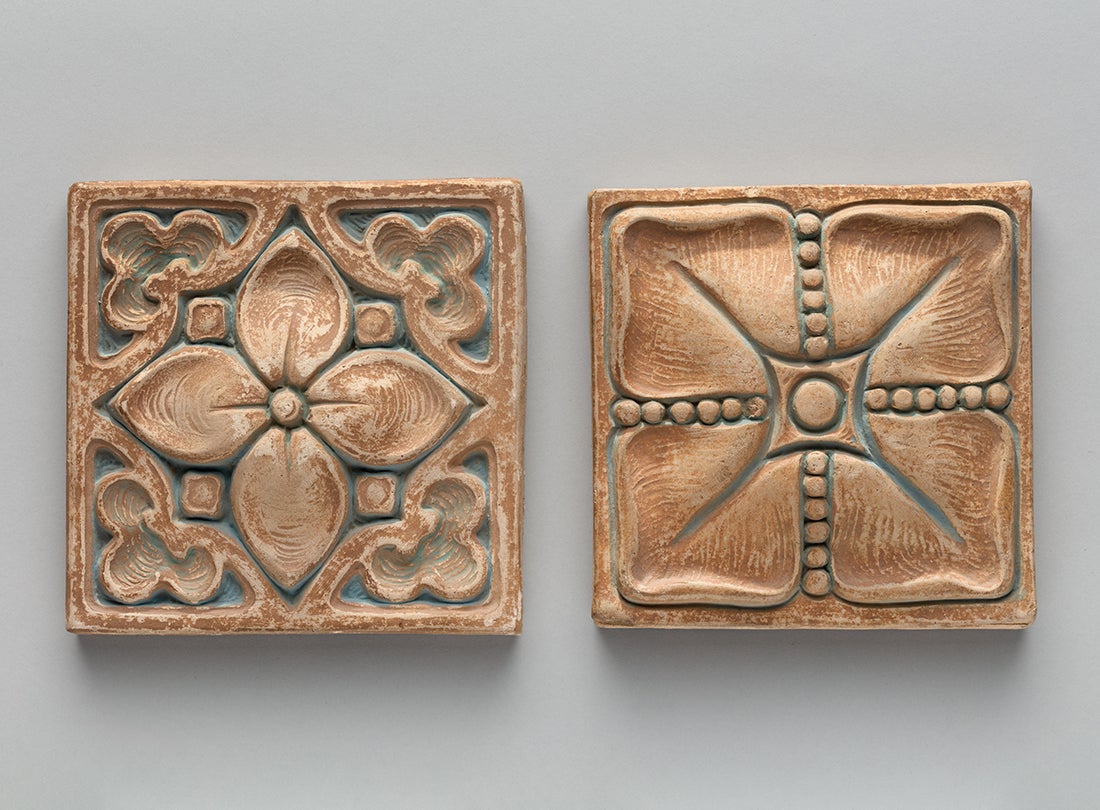
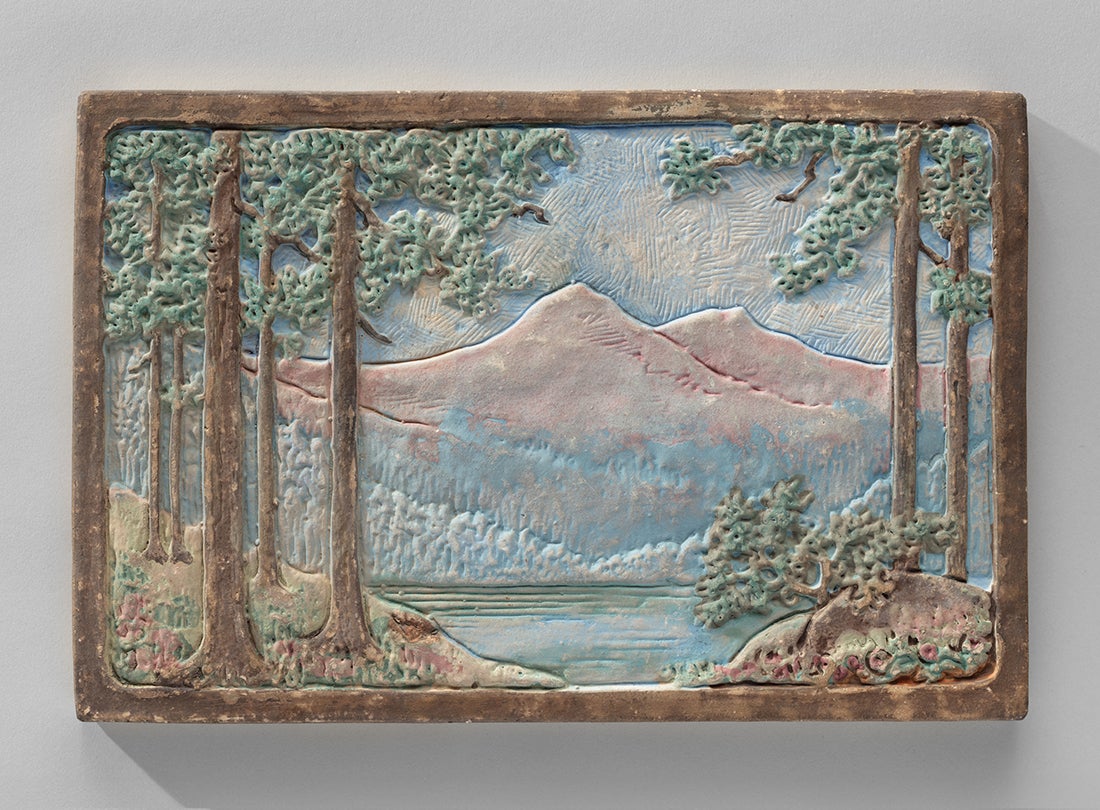
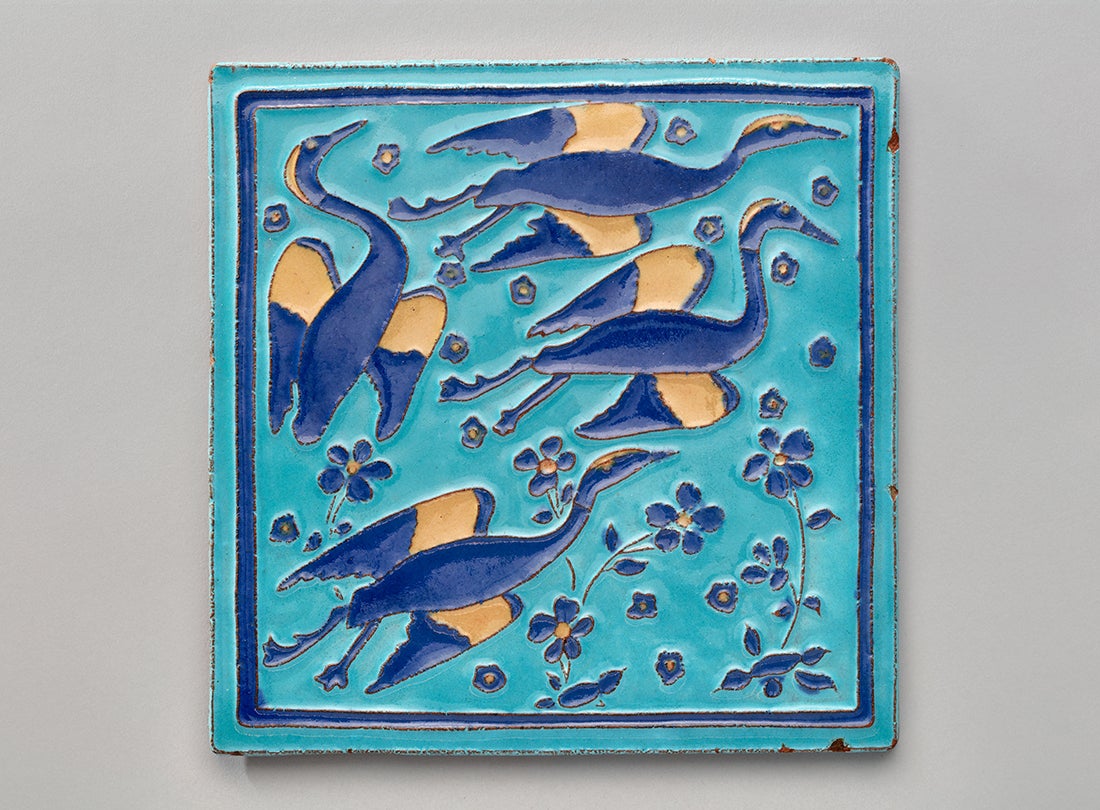
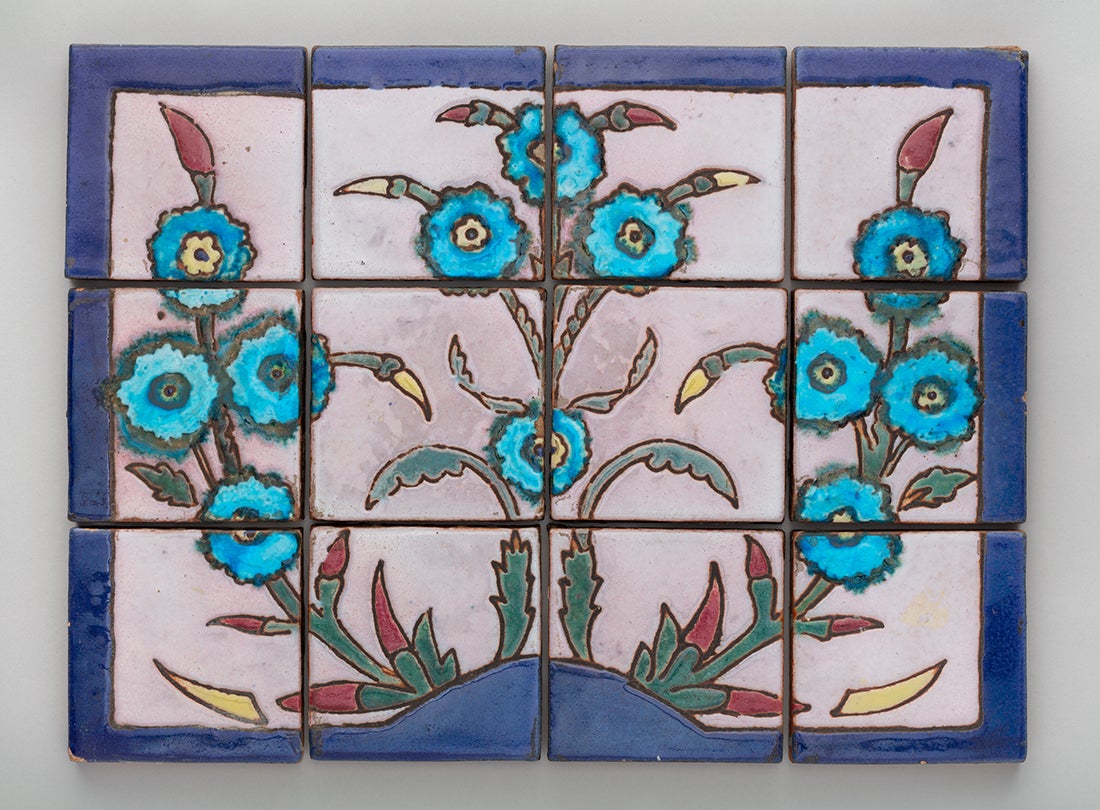
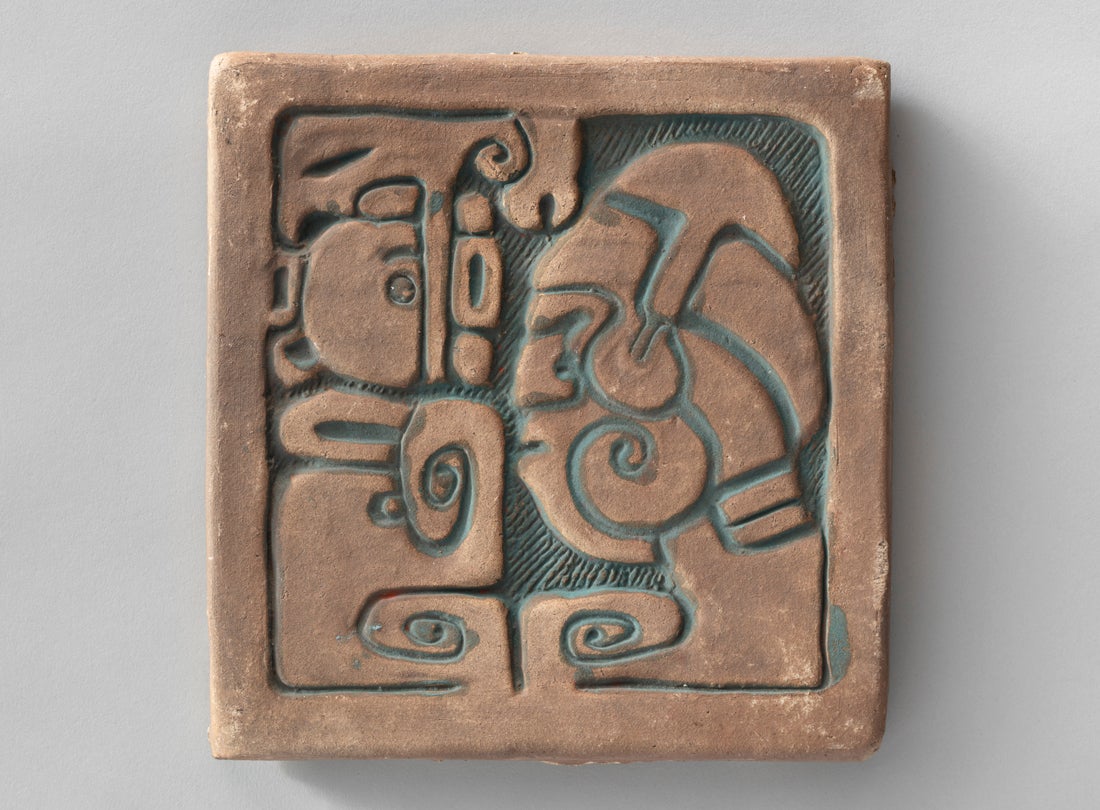
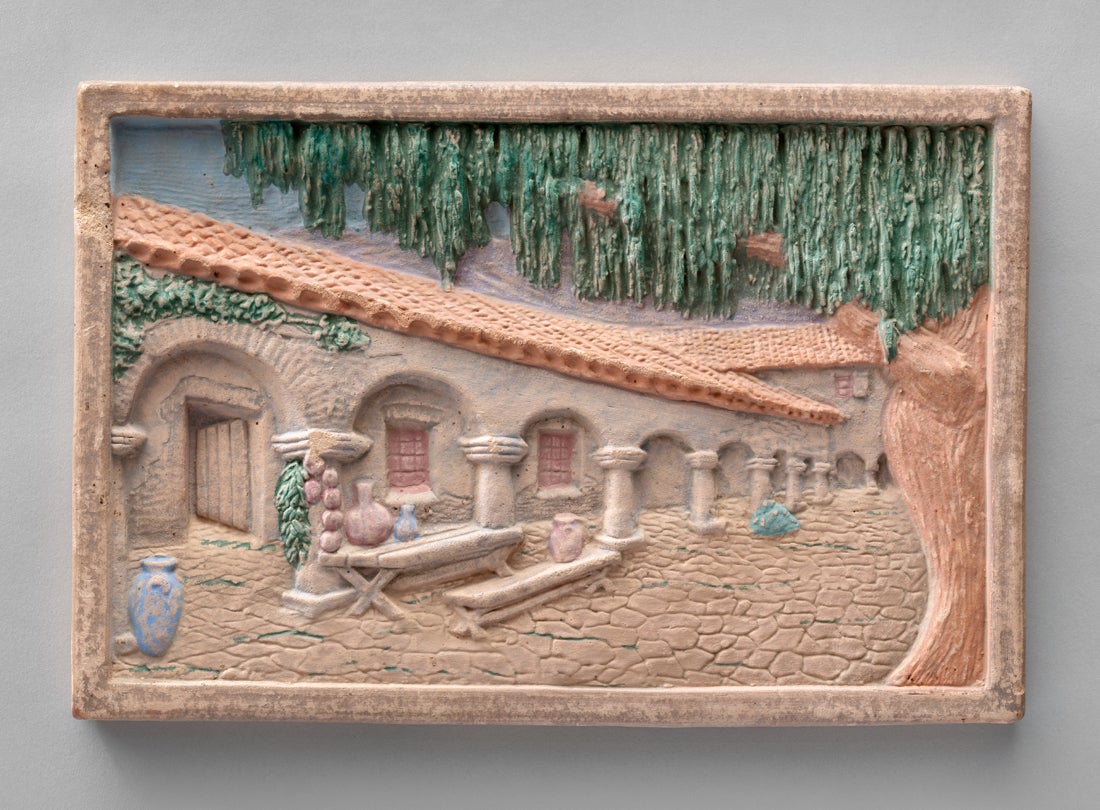
Floral-motif tile c. 1920–32
Batchelder-Wilson | Los Angeles
slip-glazed earthenware
Courtesy of Tile Heritage Foundation
1989.01.614
L2024.1101.012
Leaf Rosette tile c. 1920–32
Batchelder-Wilson | Los Angeles
slip-glazed earthenware
Courtesy of Tile Heritage Foundation
1989.01.615
L2024.1101.013
Arts and Crafts Tile
The Arts and Crafts movement emphasized hand craftsmanship, simple forms, and motifs derived from nature. Ernest A. Batchelder (1875–1957) was the foremost maker of California Arts and Crafts tile. In 1910, Batchelder built a school at his home in Southern California’s Arroyo Seco neighborhood and taught Arts and Crafts design and technique in a variety of media. After purchasing tile for the project from famed Pennsylvania Arts and Crafts tilemaker Henry Chapman Mercer (1856–1930), Batchelder changed course and began producing his own.
Around 1910, Batchelder was making tile in his backyard studio; by 1912, he moved production to a dedicated warehouse nearby. Made from clays sourced throughout California, Batchelder tiles were molded in relief and often dipped in colored slip, or liquid clay, that was wiped from the surface to highlight recessed areas. Batchelder tile proved so popular that in 1920, he expanded to a seven-acre factory in Los Angeles and reformed the company as Batchelder-Wilson along with shop foreman Lucian H. Wilson (1888–1982).
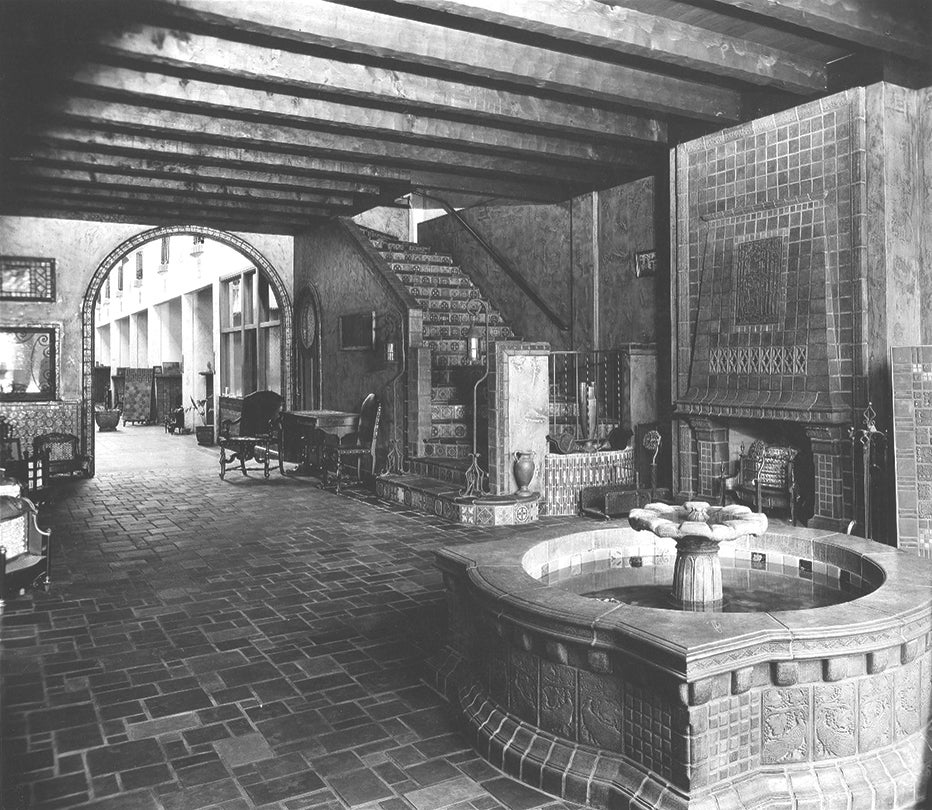
[image]
Batchelder mantel, fountain, and floor tiles in
Robert Howden & Sons tile showroom c. 1925
Oakland, CA
Courtesy of Tile Heritage Foundation
R2024.1101.082
Woodland tile c. 1921–39
Claycraft Potteries | Los Angeles
slip-glazed earthenware
Courtesy of Tile Heritage Foundation
1987.02.004
L2024.1101.006
Relief Tiles
Relief tiles feature three-dimensional designs that are pressed directly into soft clay before it is dried and fired. Some of the earliest relief tiles date to the fifth century in Persia and the grand pictorial friezes made from glazed architectural bricks for royal palaces. By the twelfth century, glazed relief tiles decorated with a variety of patterns were installed in churches and castles throughout Northern Europe. During the eighteenth century, the Industrial Revolution introduced mechanized processes to tilemaking, including the use of metal dies and presses for mass producing relief tiles.
Claycraft Potteries, founded in 1921 in Los Angeles, was one of the preeminent makers of Southern California relief tiles. When making pictorial tiles for their Handmade line, workers at Claycraft hand-pressed clay into plaster molds that included incised details, such as the cross-grained “forking” evident in sections of sky and other backgrounds. After setting-up in the molds, tiles were hand-painted with colorful glazes before firing in the kiln.
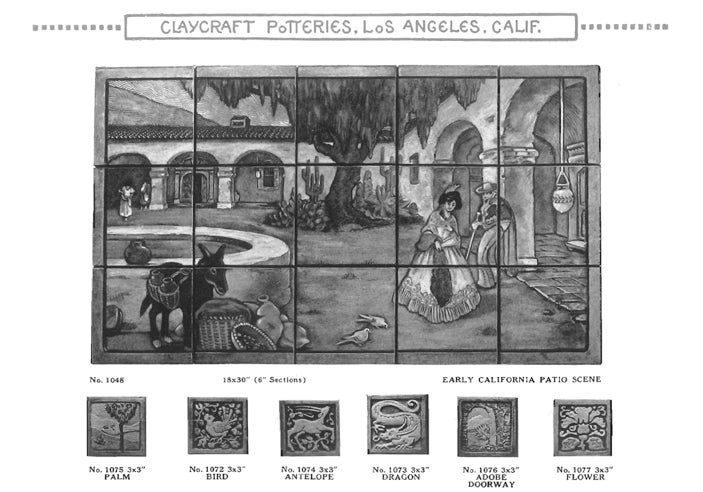
[image]
Claycraft Products catalog page 1920
Claycraft Potteries | Los Angeles
Courtesy of Tile Heritage Foundation
R2024.1101.083
Persian crane-motif cuenca tile c. 1915–59
California Faience | Berkeley, CA
glazed earthenware
Courtesy of Tile Heritage Foundation
2019.61.086
L2024.1101.025
Traditions in California Tile
Drawing on ancient relief tilemaking techniques, Spanish ceramicists developed cuenca tiles during the fifteenth–sixteenth centuries. Cuenca tiles, also known as arista, are made by pressing soft clay into shallow molds before bisque-firing and decorating with glazes for final firing. Cuenca tiles take their name from a Spanish word for “basin” and rely on areas of low relief to keep their colorful pockets of glazes separated. California Faience, located in Berkeley, made cuenca tiles by pressing clay into plaster molds that created “little dams” to contain multicolored glazes applied with syringes. Known for their artistically rendered tiles and reputation as a studio pottery rather than a tile factory, California Faience supplied tiles designed by architect Julia Morgan (1872–1957) for Hearst Castle in San Simeon.
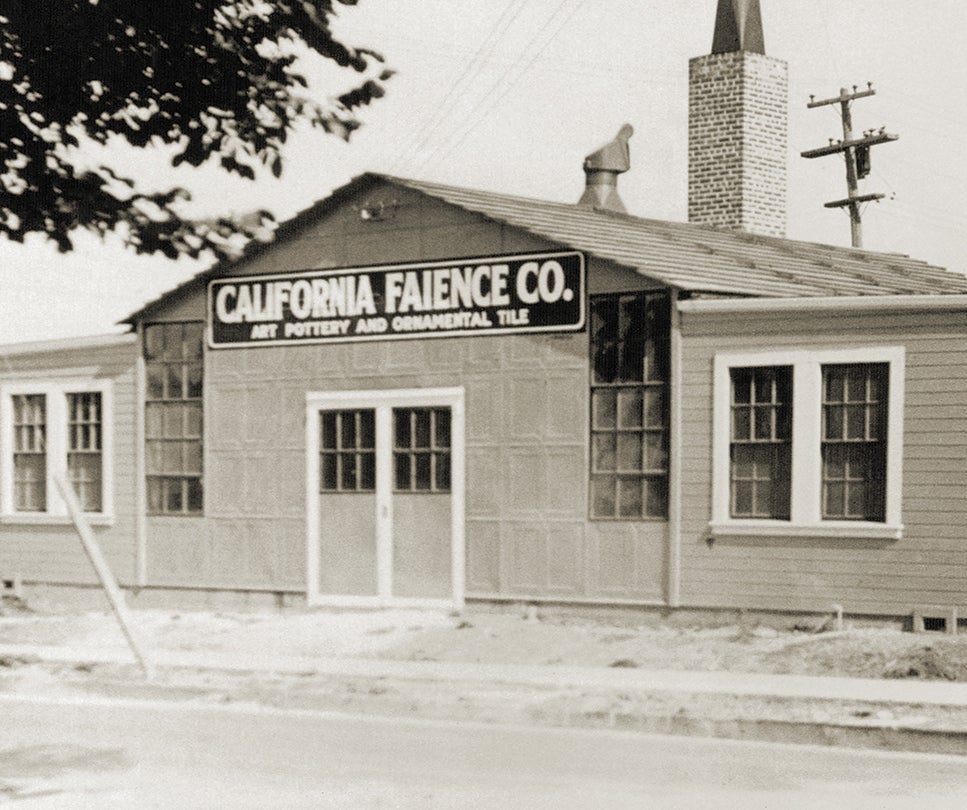
[image]
California Faience factory c. 1925
Berkeley, CA
Courtesy of Tile Heritage Foundation
R2024.1101.084
Floral-motif cuerda seca tiles c. 1920–36
Solon & Schemmel | San José, CA
glazed earthenware
Courtesy of Tile Heritage Foundation
2019.11.239a–l
L2024.1101.081a–l
Solon & Schemmel
Solon & Schemmel was founded in San José, California, in 1920, by tilemaker Albert L. Solon (1887–1949) and his business partner Frank P. Schemmel (c. 1887–1950). Solon had deep roots in the tile industry; he was raised in Stoke-on-Trent, England, famous for its ceramics industry, and apprenticed there at Minton’s, where his grandfather and father served as art director and head designer. After immigrating to California in 1908, Solon was the director at Arequipa Pottery in Fairfax and instructed at San José State Normal School (now San José State University). In 1915, Solon received gold medals for his working pottery display at the Panama-Pacific International Exhibition. At Solon & Schemmel, he created historically based, imaginative tile designs that were installed in homes and public spaces throughout California, including Hearst Castle in San Simeon, and the Steinhart Aquarium and Castro Theatre in San Francisco.
Solon & Schemmel made cuenca tiles, pressed from hand-cut linoleum molds, and cuerda seca tiles—both traditional methods that date back to antiquity. Cuerda seca is based on a technique developed in Central Asia and Iran during the fourteenth–fifteenth centuries as an alternative to the time-consuming process of making tile mosaics. Introduced to Spain by Moorish potters, cuerda seca, Spanish for “dry cord,” involves painting lines with a resist, such as a manganese and oil mixture, that forms a barrier between glazes and burns away when fired—leaving a dark outline that is indicative of the technique. Still produced today, cuerda seca tiles recall the Spanish Colonial Revival style that was showcased by Solon & Schemmel and other California tilemakers in the early twentieth century.
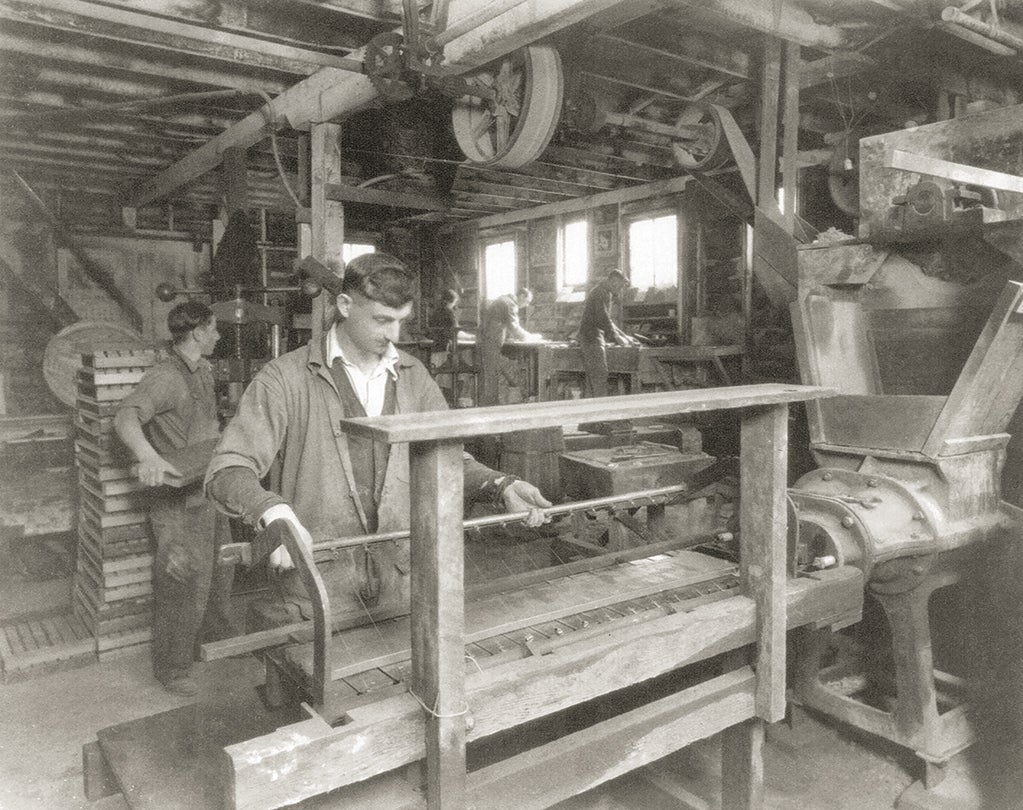
[image]
Solon & Schemmel forming machine c. 1925
San José, CA
Courtesy of Tile Heritage Foundation
R2024.1101.085
Pre-Hispanic Revival-style tile c. 1925–35
Muresque Tiles | Oakland, CA
slip-glazed earthenware
Courtesy of Tile Heritage Foundation
2023.382.009
L2024.1101.043
Pre-Hispanic Revival Tile
Pre-Hispanic Revival architecture emerged in California during the 1910s as a romanticized mixture of traditional Indigenous imagery found in modern-day Central America and Mexico. Commonly referred to at the time as Mayan Revival, the style was popularized after archaeologists uncovered the remnants of ancient Mayan, Aztec, and other Indigenous civilizations during the late nineteenth and early twentieth centuries. Architects and designers drew inspiration from sites such as Chichén Itzá in the Yucatán peninsula and Palenque in Chiapas—still two of the most famous Mayan ruins in Mexico.
Exhibitions inside the California Building at the 1915 Panama-California Exposition in San Diego used cast concrete to reimagine the facades of massive, pre-Hispanic stone palaces and pyramids. Architect Frank Lloyd Wright (1867–1959) designed homes made from concrete blocks that re-envisioned Mayan ruins. Tilemakers created pre-Hispanic Revival-style designs that were installed in staircases and around the fireplaces of many Spanish Colonial Revival-style homes.
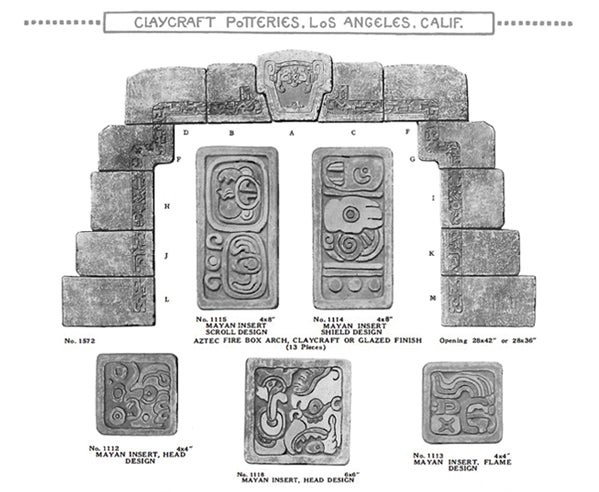
[image]
Claycraft Products catalog page 1920
Claycraft Potteries | Los Angeles
Courtesy of Tile Heritage Foundation
R2024.1101.086
Spanish tile c. 1925–35
Muresque Tiles | Oakland, CA
slip-glazed earthenware
Courtesy of Tile Heritage Foundation
2001.04.043
L2024.1101.075
Muresque Tiles
From 1925–35, Muresque Tiles, located at 1001 22nd Avenue in Oakland, California, produced some of the finest pictorial relief tiles made during the golden era of California tilemaking. Molded in high relief by hand from plaster molds, Muresque tiles portrayed idyllic West Coast scenery, fantastical images of ships at sea, and romanticized Spanish, Mexican, and European scenes. Available in more than 130 different designs, these imaginative and artful tiles were hand-painted in either a single-color slip, or in a polychrome finish with multiple colors of liquid-clay glazes. Muresque pictorial tiles were often installed around fireplaces within interlocking architectural moldings and sections of plain-finished tiles. Muresque closed its Oakland factory in 1935 under financial strain from the Great Depression.
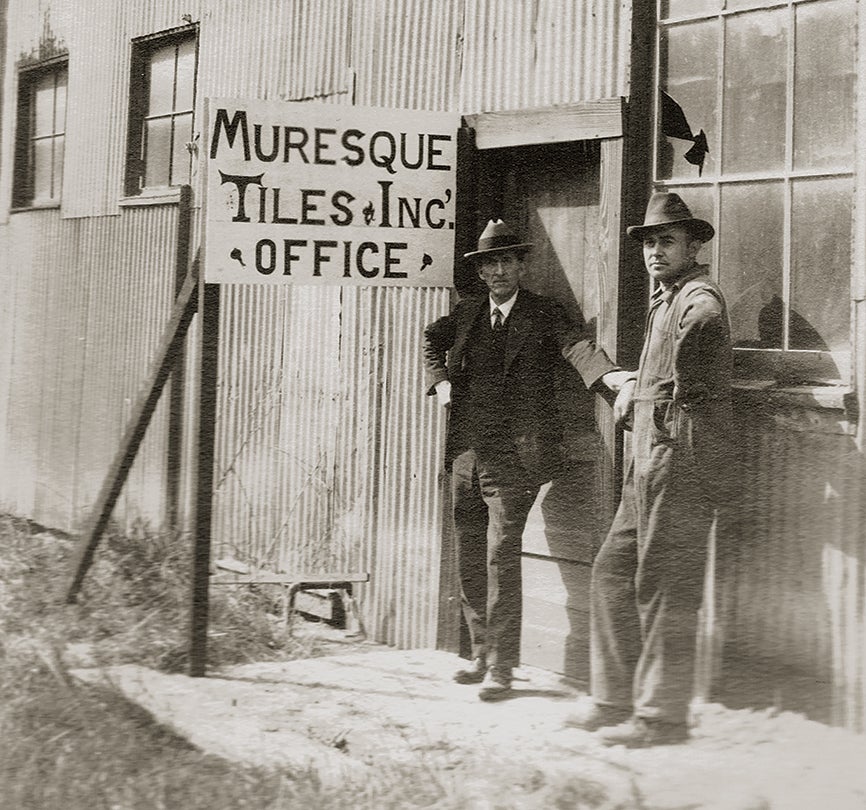
[image]
William Flynn Muir (left) at his Muresque factory c. 1928
Oakland, CA
Courtesy of Tile Heritage Foundation
R2024.1101.088
